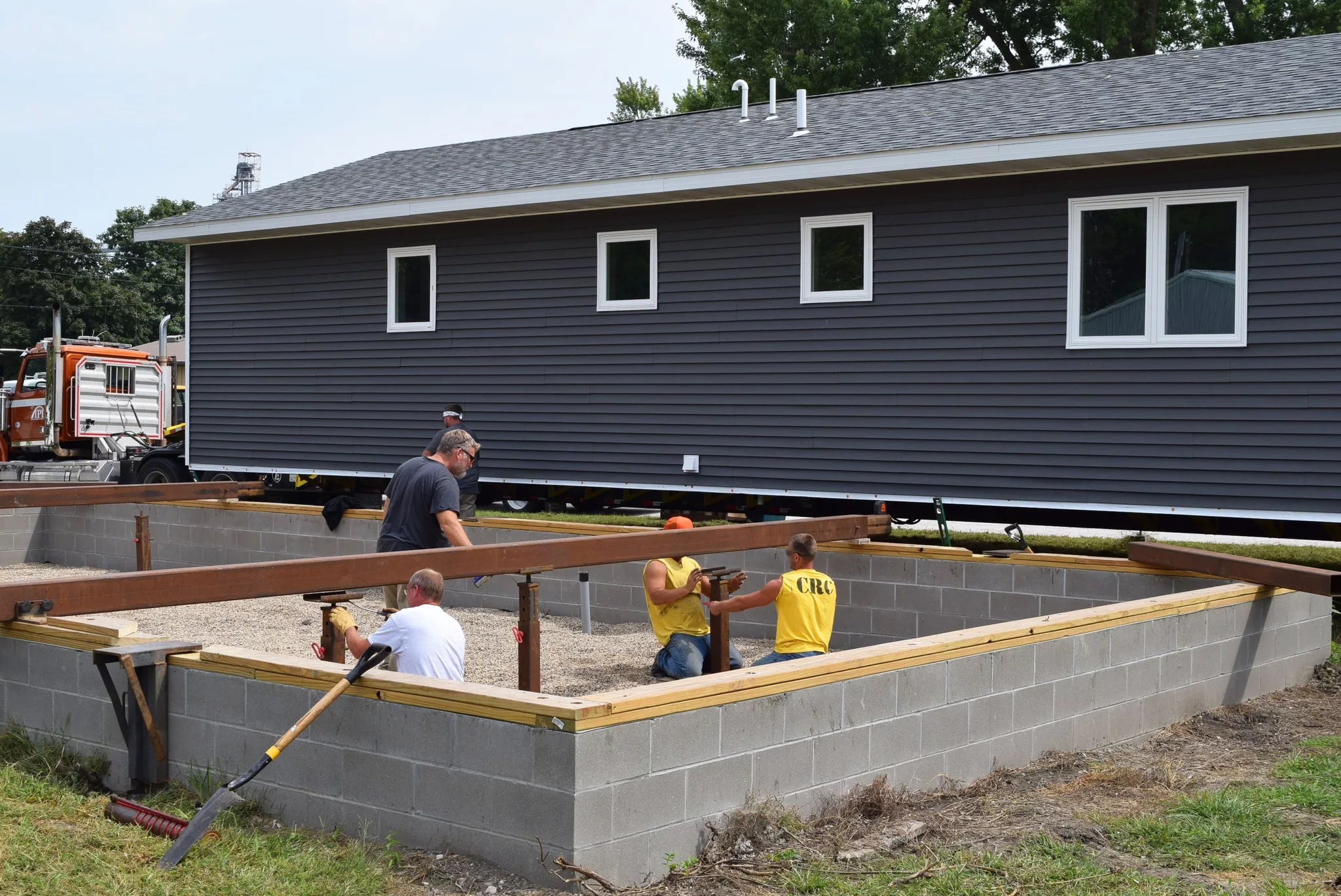
100th Homes for Iowa home delivered in Rippey. Photo courtesy of Iowa Prison Industries
Greene County recently made history again through a housing program that saw its first delivery about five years ago.
Region XII Council of Governments Executive Director Rick Hunsaker says the first Homes for Iowa project, in partnership with Iowa Prison Industries, had the first home delivered in Jefferson in late 2019, then came the third house shortly after that. Hunsaker points out that this past August, Homes for Iowa came back around to another Greene County community.
“And then low and behold we were working with Mark and Cindy Devilbliss down in Rippey to get a Homes for Iowa house installed (and) eventually got that. I had no idea until I saw on their Facebook post that it was house number 100 in the state, was the one delivered to Rippey.”

Hunsaker notes that there are several homes throughout the Raccoon Valley Radio area, including in conjunction with Dallas County Habitat for Humanity that has seven homes, along with two in Panora with Region XII, and one in each of Menlo, Coon Rapids, and Manning that are being developed by private individuals and/or housing developers. He explains that Homes for Iowa was modeled after a program in South Dakota ten years ago, gives prisoners the opportunity to learn different construction skills and are up to the state’s housing regulations.
“All of that is done under the supervision of trainers, they’re inspected, and they’re registered officially, with the state of Iowa. They get the sticker that they are a modular home, even though they are stick-built homes, they are a modular home, so it can go in any community. It meets all of the building codes for the state of Iowa.”
Hunsaker says all of the 24-foot by 50-foot homes are built and delivered for $99,000. However, he adds that each home does not include a garage, flooring, or any appliances. The homes must go on a lot that has either a crawl space or a full foundation. He hopes to see even more Homes for Iowa being delivered to several more communities across the state to improve overall neighborhoods, bring up appraisals, drive down housing shortages, and decrease the recidivism rates for convicts.

